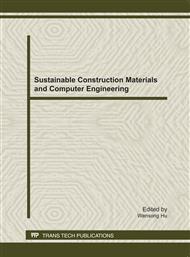p.210
p.216
p.222
p.228
p.236
p.241
p.247
p.253
p.259
Modal Analysis of High Power Variable Speed Hydrodynamic Coupling Impellers
Abstract:
In view of the complex vibration characteristics of hydrodynamic coupling, dynamic analysis of hydrodynamic coupling is carried out by finite element method (FEM), and modal characteristics of pump and turbine which are the most important parts of it are calculated. Modal vibration analysis data of pump and turbine could be obtained by ANSYS software and the natural frequencies of it within different rotational speed is calculated. The result shows that the natural frequencies of pump and turbine are increasing along with enhance of the rotating speed, and it illustrates that rotating centrifugal force could be reinforced natural frequencies of the structure. According to the relationship between exciting force and rotating speed,the critical speeds of pump and turbine are calculated. And the stability operating condition of hydrodynamic coupling must be avoided in each order critical speed of pump and turbine. The research work provides an effective method to analyze the vibration of hydrodynamic coupling. It is suitable for further dynamic analysis and structure optimum design to reduce the vibration of Hydrodynamic coupling.
Info:
Periodical:
Pages:
236-240
Citation:
Online since:
September 2011
Authors:
Price:
Сopyright:
© 2012 Trans Tech Publications Ltd. All Rights Reserved
Share:
Citation:


